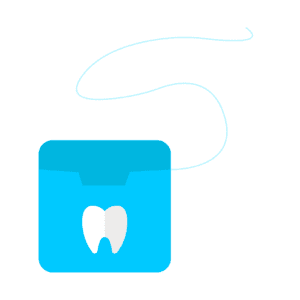Gum disease can not only ruin the appearance of your teeth and smile, but it can also erode your gums, attack the bones that support your teeth and keep them in place, and can contribute to other health problems like cardiovascular disease.
Keeping Teeth Clean
 Everyone’s mouth is full of bacteria. Bacteria, along with remnants of the food we eat and drink, naturally combine to form a sticky, clear plaque that coats each tooth. Plaque that is not removed hardens and creates tartar that can often only be removed by a professional dental cleaning.
Everyone’s mouth is full of bacteria. Bacteria, along with remnants of the food we eat and drink, naturally combine to form a sticky, clear plaque that coats each tooth. Plaque that is not removed hardens and creates tartar that can often only be removed by a professional dental cleaning.
Plaque and tartar that remain on the teeth become more harmful over time. Bacteria causes inflammation of the gums called gingivitis, which is the beginning of gum disease. Gone untreated, gingivitis advances to periodontitis where the gums pull away from the teeth and can become infected. When bacteria get below the gum line, the infection can reach the bone. Gum disease at this advanced stage requires lifelong dental treatment and is avoidable with good oral health habits.
Water Floss or Dental Floss?
 If you’re like most people, flossing feels like a chore that is easy to convince yourself you don’t really need. But you are wrong! Flossing every day is the key to prevent the buildup of plaque that will lead to tartar. Removing the plaque keeps bacteria away, fresh breath, and a healthier mouth.
If you’re like most people, flossing feels like a chore that is easy to convince yourself you don’t really need. But you are wrong! Flossing every day is the key to prevent the buildup of plaque that will lead to tartar. Removing the plaque keeps bacteria away, fresh breath, and a healthier mouth.
If you have been thinking about using a water flosser instead of flossing with dental floss, be sure to consider the pros and cons of each method.
- Water Floss
An oral pulsating irrigator, also known as a water pick or water flosser, uses a thin stream of water to remove particles between teeth and in the mouth. This different approach to flossing allows the water pressure to massage gums and push food out from in between teeth.
Water picks can be tricky to use but can help people shift particles away from braces or dental bridges. More expensive than traditional dental floss, water flossers also need electricity, water, and a space for storage making them not as convenient.
- Dental Floss
Traditional dental floss is a thread of string or soft material. Using floss to get in between teeth and down to the gum line is a highly effective way to reach and remove particles and plaque. Dental floss can also be used to scrape up and down on all sides of each tooth.
Dental floss can also be a bit tricky to use but comes in different varieties, including waxed for easier gliding. Dental floss is inexpensive and easy to use anywhere. Flossing can cause minor bleeding if not done regularly and can be difficult to use for some people who have arthritis or dexterity issues.
Floss for Life
 As mentioned, regularly flossing your teeth is the best way to ensure healthy gums, a bright smile, and nice breath. While water flossing does remove plaque-causing particles in the mouth, traditional dental floss is the sure-fire way to scrape away plaque and shift early-forming tartar on the teeth that a water pick just can’t remove as effectively.
As mentioned, regularly flossing your teeth is the best way to ensure healthy gums, a bright smile, and nice breath. While water flossing does remove plaque-causing particles in the mouth, traditional dental floss is the sure-fire way to scrape away plaque and shift early-forming tartar on the teeth that a water pick just can’t remove as effectively.
If you have a water flosser or water pick, the best approach is to use it as an aid in addition to your traditional dental floss routine. Use the water pick in the morning and dental floss before bed! Because flossing is so essential to good oral health, the key is to keep flossing and seeing your dentist for regular checkups and cleanings!
To schedule your next dental visit, call us at (303) 477-1042 or contact us to book an appointment!
